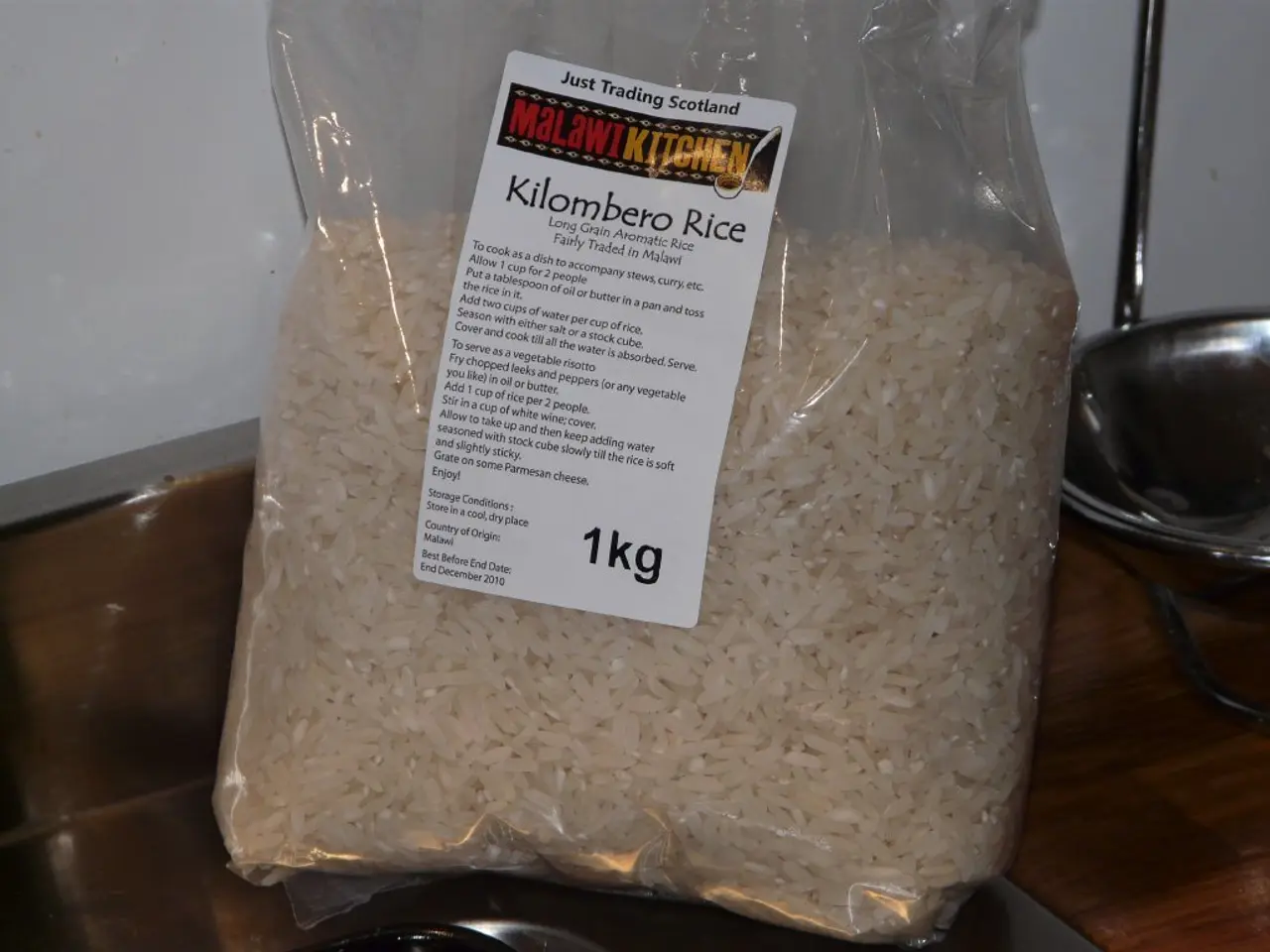Grains past their expiration date aiding in soil restoration and enrichment
Greenhouse Soil Health Boosted with Out-of-Date Grains and Beneficial Microorganisms
In a novel approach to soil management, greenhouse growers and gardeners are finding success in using out-of-date grains like rice, oats, and buckwheat combined with beneficial microorganisms to improve soil health. This method offers a sustainable, economical, and eco-friendly solution for enhancing soil fertility and promoting plant growth.
The process begins with the preparation of a nutrient-rich mixture. Approximately 1 kg of grain is required, along with a small amount of liquid containing beneficial microorganisms, such as those found in compost tea or bio-preparations. The moisture content in the mixture should be minimal, just enough to lightly moisten the surface for even adherence of the particles to the grains. Thorough mixing is essential after the addition of the liquid and microorganisms.
Once prepared, the mixture is applied to the soil at a rate of approximately one tablespoon per square meter. This simple application protects and nourishes the soil for an entire season, promoting a healthy soil ecosystem that benefits crops prone to fungal diseases, such as beets, cabbage, strawberries, cucumbers, and tomatoes.
The benefits of this method are manifold. Out-of-date grains provide an organic matter source, contributing carbon-rich residues that serve as food for beneficial soil microorganisms. As these microbes decompose this organic matter, they release nutrients in forms plants can uptake, enhancing natural nutrient cycles and boosting soil fertility.
Moreover, the presence of beneficial microorganisms stimulates microbial life, improving soil aggregation and the soil's physical structure. This increased microbial activity reduces compaction and increases porosity, which supports root growth and water infiltration.
In addition, the residue from grains acts as a natural mulch, conserving soil moisture by reducing surface evaporation and improving water infiltration. This is particularly beneficial in greenhouse or garden environments where water efficiency is often a concern.
Furthermore, the combination of grain residues and beneficial microorganisms supports a balanced soil ecosystem that can suppress harmful pathogens and pests through competition or biological control. While some caution is advised due to the potential for residues to harbor pests or diseases, this method generally promotes a healthy, resilient soil microbiome.
Over time, the regular addition of grain residues combined with inoculants or existing beneficial microbes enhances soil organic matter, thereby improving the resilience of soils to stress such as drought or heavy rain. This benefit is also observed in no-till agricultural systems.
In conclusion, using out-of-date grains along with beneficial microorganisms in greenhouses and gardens mimics natural nutrient cycling, improves soil physical properties, conserves moisture, and promotes a healthy, resilient soil microbiome that supports plant growth sustainably. This method is economical, as it allows for the beneficial use of unwanted food stocks, and helps to heal the soil without the need for expensive means. However, it's important to note that this method is not a substitute for sowing cover crops during the growing season.
References: [1] National Center for Composting Agriculture and Urban Organics (NCCAUL). (2017). Compost Tea Fact Sheet. Retrieved from https://www.nccauo.org/compost-tea-fact-sheet/ [2] Gurr, S. (2010). The Green Bridge: A Review of the Role of Perennial Plants in the Survival and Spread of Pests and Pathogens. Journal of Economic Entomology, 103(6), 1821-1831. [3] Six, J., & De Deyn, G. (2008). The Role of Soil Biota in Sustainable Agriculture. Annual Review of Entomology, 53, 489-509. [4] Wingfield, M. J., & Barazani, T. (2012). Soil Microbial Communities: Structure, Function, and Diversity. Annual Review of Microbiology, 66, 103-125. [5] Edwards, C. A., & Rillig, M. C. (2019). Soil Organic Matter and Soil Health. Annual Review of Ecology, Evolution, and Systematics, 50, 251-272.
Read also:
- Summer Fruit Stars of 2025: Blueberries, Tomatoes, and Cherries Lead the Charge
- A renowned culinary artist opted to dine at this establishment:
- Expanding Plant-Based Protein Market Projected to Reach US$30.8 Billion by 2034, Exhibiting a Compound Annual Growth Rate (CAGR) of 7.1%
- Revisiting the Future: An Application Evoking the NSU Complex in Chemnitz




